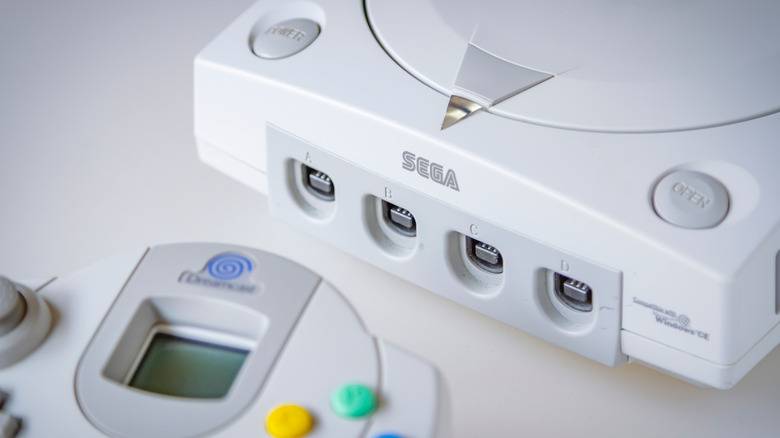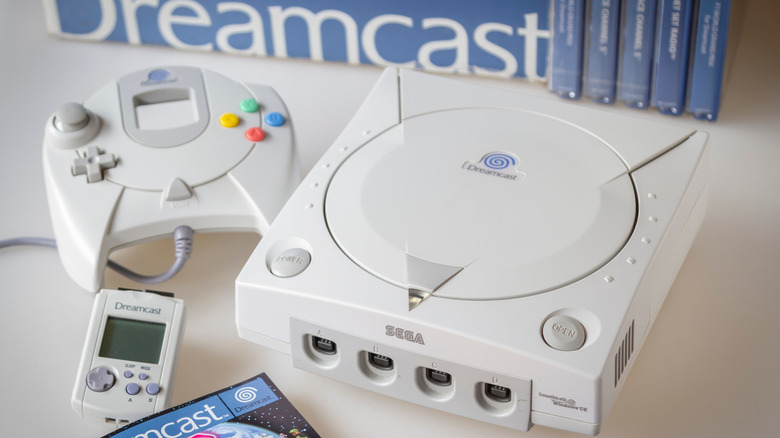Here's Why The Sega Dreamcast Flopped
Although the Sega Dreamcast is regarded by many today as a great console, its initial disappointing release led Sega to pull out of the video game console market entirely. Despite the console's strengths and wide variety of unique and exciting games, it failed to become financially successful in its time for a multitude of reasons. Previous to the Dreamcast, Sega was already on thin ice after its disastrous release of the Sega Saturn. The company wanted to jump the gun on the Saturn's U.S. release date in order to get ahead of Sony's PlayStation release, but that decision heavily backfired, as The Guardian explains. After this momentous mistake, Sega had to come up with something to get back on its feet — and fast. The Dreamcast was released in 1998 in Japan and 1999 in North America (via IGN), competing against Sony's PlayStation 2, with Nintendo's GameCube, as well as Microsoft's Xbox looming on the horizon.
However, the Dreamcast did have a lot going for it and in some ways was ahead of its time. Much of this was only appreciated far after the console had been discontinued, such as the acclaimed games "Shenmue" or "Jet Grind Radio." The Dreamcast was also able to take advantage of the growing popularity of the internet, being the first ever console to include a modem and internet connectivity (via Chicago Tribune). This allowed for features that were relatively unheard of for the time, such as voice chat and online play (via IGN). Despite these strong points, though, Sega would find they still couldn't keep their heads afloat.
Sega Dreamcast's downfall
The Dreamcast's release in America in 1999 was initially very successful. Although EA Games had stepped away from working with Sega to create sports games (which would pose problems for it later), there were plenty of other games that people were excited for, like "Sonic Adventures" and "Soulcalibur," as IGN reports. However, the Dreamcast proved to be no match for the PlayStation 2 once it arrived on the scene in 2000.
The PlayStation 2 offered many things the Dreamcast didn't. DVD playback, popular sports games from EA, and better advertising were some of the factors that were at play as the PlayStation 2 quickly gained leverage over the Dreamcast. Sega attempted to remedy this by introducing a price drop for its newest console, and while this did momentarily boost sales, it was not enough to give them a full recovery. The GameCube and Xbox releases were on the horizon, and Sega realized if it couldn't compete at this point, there wouldn't be any hope for the Dreamcast down the line.
Only a few years after its release, the Dreamcast was discontinued (via ABC News). At the time, the Dreamcast had sold about 6.5 million units, while the PlayStation 2's sales reached about the same amount, but as a whole Sony's PlayStation brand had sold around 75 million units. The Dreamcast also marked Sega's last contribution to the hardware market, instead shifting focus to creating games. However, despite the Dreamcast's failure, it eventually gained a cult following thanks to its impressive library of games which are still fan favorites among many gamers today.

